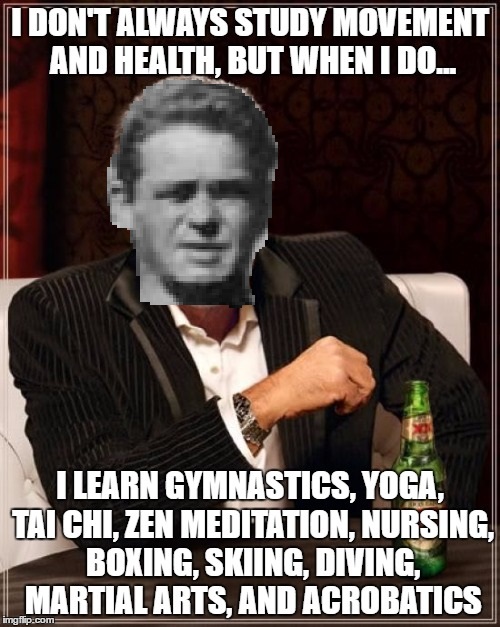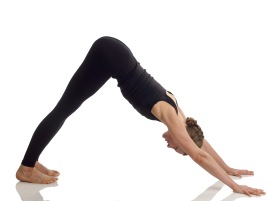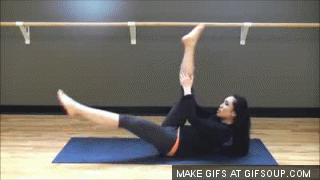Last week I started a series on lower back pain called
How to fix your lower back pain
Or lower back pain 101: Learn to manage it before it manages you
This will be the second installment in that series and this will focus on the treatment of back pain using Pilates. If you want a quick refresher on the article, you can take a look here to catch you up.
Firstly, let’s dive into the history of Pilates. Unlike Yoga that has been around for thousands of years, Pilates is relatively new to the fitness and rehab world as it was only developed in the early 1900’s by an incredible German man, Joseph Pilates. Joseph grew up a sickly young man and leaned on fitness and body building to improve his health- which worked. Once healthy, he took a liking to fitness and human movement and picked up some hobbies like gymnastics, yoga, tai chi, zen meditation, nursing, professional boxing, skiing, diving, martial arts instruction, and circus acrobatics. Truly a man who dabbled in all things movement. His method, when brought to America in 1923, was a huge hit right away with dancers to rehab any injuries.

The Pilates Method
The method developed by Joseph Pilates focuses on breathing, concentration, control, centering, flow, postural alignment, precision, relaxation and stamina. The breakdown is as follows
Breathing: Probably the important part of the Pilates method is the focus on breathing. You are taught to breathe while maintaining a contraction with the pelvic floor and deep transversus abdominal muscles by expanding the outer rear sides of the ribs.
Concentration: Focusing on the movement and nothing else. We can see the influence of Zen meditation on the Pilates method here.
Control: coupled with concentration, this principle focuses on maintaining control of every body part incorporated with the motion. For example, if you were bringing your knees to your chest while lying down, you wouldn’t let your ankles flop around haphazardly.
Centering: focusing your energy to be expelled from the area between your lower ribs and your pubic bone. In many martial arts and Yoga this is called your Chi. In the Physical Therapy world, we often use this point to explain a person’s center of gravity.
Flow: The movements should be done with rhythm and control leading to a feeling of flowing as opposed to staccato type movements. An example of flow could be observed by watching or participating in a Tai Chi class
Postural Alignment: maintain proper posture throughout all motions (I believe this is redundant with some of the above principles)
Precision: the movements in Pilates should be done with precision and not halfheartedly completed. As mentioned in the control principle, motion is deliberate at each joint and has a set path
Relaxation: Like yoga, Pilates should be done with alternating muscle groups relaxing and contracting. This allows for balance between muscle groups allow us to move in a flow like manner
Stamina: In my opinion, this one could be renamed efficient learning. As you practice Pilates (or any movement) we become more and more efficient with our movement allowing us to move for greater periods of time using less energy.
As the author of this article, I reserve the right to editorialize. I wouldn’t stake my reputation on this next “fact”, but I would be very willing to debate my side. When comparing Yoga to Pilates, my instruction to patients usually follow some statement along the lines of “Yoga is great for stability at the spine in a static (non-moving) position while Pilates focuses on the same stability, but dynamically (with movement).”
 vs.
vs. 
So this multifaceted method of exercise and rehabilitation is great to help stabilize the spine thus decrease pain. Based on the principles above, I have listed some videos below that I believe are great to manage your lower back pain
Airikai style Pilates by Master Trainer, Matthew Hackney https://www.youtube.com/watch?v=FVtNLwundu4
The Pilates Online Academy https://www.youtube.com/watch?v=l-dGQSIJJto
Dr. Noelle Reid https://www.youtube.com/watch?v=708lxxa86c0
Like I said in my last post, these videos are good and the people seem to know what they’re talking about- however, nothing beats having someone trained observing you and how you perform to make sure you do minimal damage. There are many skilled healthcare workers and yoga trainers who run classes to help you in your journey to a pain-free existence.
Next week I tackle pharmaceutical management of lower back pain with my wife, Laura Davids MD, a Physiatrist working in Ronkonkoma, NY whose talents are matched only by her beauty. Though if any of you say that you’d be cruising for a bruisin’ 😉
Did I leave something important out? I’m always up to learn something new if I made a mistake- so, what’s your beef? Leave a comment below
Dr. Daniel Davids PT
(646) 733-4737


Excellent 2nd post in this series. I await part 3!
I have noticed that Yoga helps lead into Pilates…that is to say it builds the strength, endurance, and muscular familiarization that Pilates calls for – Just my experience but I have noticed that since some Yoga postures help to stabilize the body it certainly helps to make you stronger.
Great stuff
LikeLike
Always appreciate your comments Joe. You and I are on the same page here. I’m a firm believer Of building up, and so I would push for yoga to assist in stability before Pilates- however I’ve given opposing advice at times to those who are generally hyperflexible (I.e. not us)
LikeLike
I miss your testimonial Tuesday segments. Maybe more in the future?
LikeLike
It’s in the works right now!
LikeLike
Another great job! Though this one made me blush a little..
LikeLike
I should have said the only thing that outmatches your beauty is your talent. People would be lining up for years to get an appointment with you
LikeLike